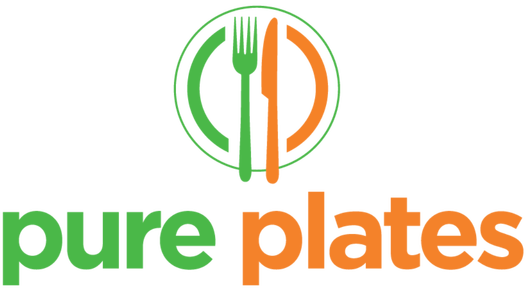The Truth About Artificial Sweeteners
Splenda, Sweet ‘N Low, Equal. These are all artificial sweeteners you may have heard! But these artificial sweeteners aren’t so “sweet”. These artificial sweeteners pose as the perfect loop-hole to satisfying your sweet tooth without the calories; however, they come with a cost. Organizations like the American Heart Association (AHA) and American Diabetes Association (ADA) have warned individuals against replacing regular products with “sugar-free” or “zero-sugar” alternatives. Let’s dive deeper into the truth behind artificial sweeteners!

First, let’s identify the products at hand. Here are some artificial sweeteners you or ingredients may have heard of approved by the FDA:
- Acesulfame K (brand names: Sunett and Sweet One)
- Advantame
- Aspartame (two brand names: Equal and Nutrasweet)
- Neotame (brand name: Newtame)
- Saccharin (two brand names: Sweet ‘N Low and Sweet Twin)
- Sucralose (brand name: Splenda)
Science behind Sweeteners
Sweeteners are derived from different forms of plants that possess sugar compounds, including starch. Corn syrup, for example, is pure glucose derived from cornstarch. Another type of cornstarch-derived sweetener is High-Fructose Corn Syrup (HFCS). In this sweetener, two types of sugars (fructose and sucrose) are combined to enhance the sweetness. There has been controversy surrounding the use of HFCS due to the correlation between sugar-intake and increased risk of obesity, cardiovascular disease, type 2 diabetes, and other chronic diseases.
There is some debate on the health consequences versus benefits of these alternative sweeteners. Some benefits of artificial non-nutritive sweeteners include little to no caloric addition to the food product, less is needed compared to natural sweeteners, weight control, and diabetes management. Since these sugar-substitutes have increased sweetness in comparison to natural sugars, they are not needed in high qualities to reach the desired level of taste. Additionally, the low glycemic index of some sweeteners can be the preferred option for individuals with diabetes. Lastly, sweeteners with no caloric-input, such as aspartame, can promote weight control.
Conversely, some health consequences of artificial sweeteners include contribution to added sugar intake, replacement of the lack of calories from an artificial sweetener-containing product with another nutrient-poor option, changes in the standard sugar taste the consumer is expecting, and correlation to weight gain. Pure Plates meal delivery service does not use any artificial sweeteners or added sugar, helping minimize sugar intake in one’s daily routine.

The Difference Between Natural and Artificial Sweeteners
It is important to note that not all sugars are the same, meaning that there is a vast difference between natural and artificial sweeteners.
Natural sugars come from plants or animal sources, like honey or maple syrup. These sweeteners tend to be highly nutritious, nutrient-dense, high in fiber, or low in glycemic load. Additional examples of natural sweeteners include:
- Honey
- Dates
- Sugar
- Coconut sugar
- Maple syrup
- Molasses
- Agave nectar
Conversely, artificial sweeteners are normally non-nutritive, which means that they contain little to no nutrients, including calories, vitamins, minerals, and fiber. Additionally, these artificial sugar alternatives are derived from synthetic chemicals and are highly processed.
These highly processed, or refined, sugars are the culprits of negative health consequences. When consumed in large amounts, these sweeteners can rapidly increase blood glucose and insulin levels, increase bodily fats, induce inflammatory responses, which can trigger the increased risk of diabetes, cardiovascular disease and other chronic illnesses.

Artificial sweeteners can be hidden in a variety of products, including:
- Soft drinks, powdered drink mixes and other beverages
- Baked goods
- Candy
- Puddings
- Canned foods
- Jams and jellies
- Dairy products
The Sugar Addiction
In modern society, we normally associate the word “addiction” with alcohol and substance abuse, but what if we applied it to everyday behaviors and choices? When applied to food, individuals can be addicted to many aspects of food and eating, whether it is a dependence on caffeine or impulsive necessity to count calories from food throughout the day. Specifically, a distinct relationship between sugar and addictive qualities in some individuals surfaced the concept of “sugar addiction”.
Sugar contains properties that release dopamine in the brain; a neurotransmitter, or chemical messenger, that plays a role in how we feel pleasure. The release of dopamine contributes to behavior reinforcement, when an outcome is positive, the behavior is rewarded and ultimately strengthened. Although sweet treats consumed in moderation and accompanied with a balanced diet pose minimal health risks, the constant cycle of deprivation and over indulging in these sugar-packed foods can lead to a variety of chronic diseases.
We recommend consuming natural sources of sugar, such as in the snacks that Pure Plates has to offer. Some natural sources of sugar are fruit or dairy products.
How Much Sugar is Too Much Sugar?
The American Heart Association recommends no more than 100 calories per day of added-sugar, which is equivalent to about 6 teaspoons or 24 grams of sugar for most women. For men, no more than 150 calories per day of added sugar, which equals about 9 teaspoons or 36 grams of sugar for most men.

The Bottom Line
Sugar is sugar. Our bodies will ultimately use every form of sugars we consume for energy, but the difference comes in the nutritional quality and source of the sweetener. We encourage you to make swaps for alternative sweeteners for natural sweeteners and to monitor your added sugar intake. At the end of the day, there is always room for a sweet treat in a balanced diet when kept in moderation. Choosing a meal delivery service like Pure Plates can help you to eat healthier, reduce sugar intake, and overall live a healthier life.
More about artificial sweeteners

